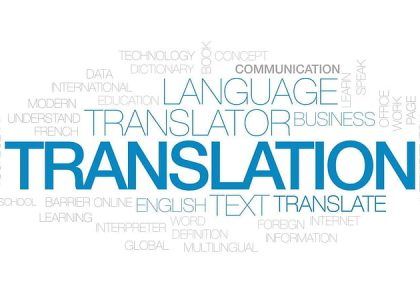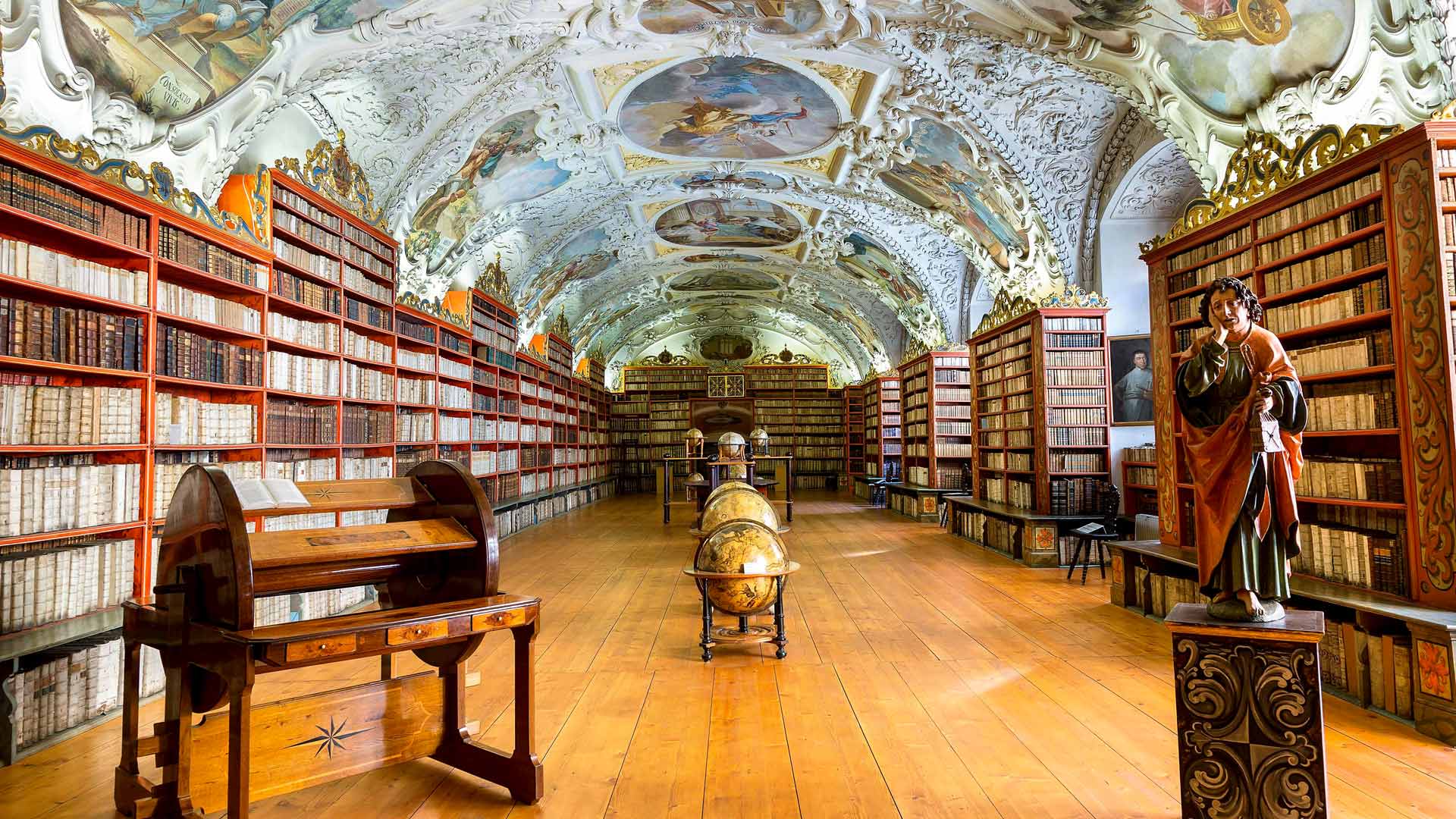A number of studies have discussed typical features of literary texts (Venuti 1996; Pilkington 2000; Berman 1985/2000:296; Stockwell 2002b; Katan 2015:12). Literary texts enjoy high social prestige; they typically aim to provoke emotions and/or entertain rather than influence or inform; they have no real-world truth-value: they are judged as fictional, whether fact based or not; they may demand extra reading or listening effort by audiences, but deliver messages or experiences beyond the commonplace. In addition, their meanings may be ambiguous and/or indeterminable, and they may use poetic language that privileges language form, as in the case of wordplay or rhyme (Jakobson 1960/1988); they are characterized by heteroglossia, depicting different voices with different viewpoints. A single text may not display all these features, but the more it does, the more literary it will appear to its readers. If genre is understood as a class of communicative acts whose typical shared features are roughly agreed by a community of users (Andrews 1991:18; Stockwell 2002b:33–34), literature may be seen as a cluster of related genres. Some, like drama or poetry, seem central to the cluster because they typically display most of the above features plus subgenre-specific features, such as live dialogue in drama. Others, like philosophy, appear more peripheral, because criteria such as fictionality are relaxed. Some genres are conventionally seen as non-literary but may still display literary features; advertising copy may use rhyme, for example. Literary translation thus draws on a cluster of strategies and skills, some shared across various literary and non-literary genres and some more genre specific.
Literary translation and the translation of scripture traditionally dominated theoretical debates, largely because few other than literary or scriptural translators wrote about translation, as Weissbort and Eysteinsson’s (2006) historical compendium of translation scholarship demonstrates. Oppositions such as faithful-free, literalcommunicative-elegant (Yan Fu 1901/2004) and foreignizing-domesticating (Venuti 1995b/2008), which feature repeatedly in such debates, are particularly relevant to literature, but arguably less relevant to technical translation. For Tymoczko (2014), however, the centrality of literary translation in the discipline is justified. Its huge, multi-language, millennia-long corpus of texts – linguistically and stylistically varied, deeply rooted in culture and context – provides ideal material for building translation theories. Literary translation also shows how all translation can make “contradictory demands on the translator”, is culturally embedded and is interpretive rather than mechanical.
Source-target text relations in literary translation have been the topic of millennia-long debate. The nature of these relations is often ranged along a spectrum, with four archetypal positions: cribs, literary best-fits, adaptations or versions, and literary works that closely reference foreign-language works. First, cribs are semantically literal versions, and often annotated. They may be intended to allow readers access to the source; alternatively, target-language dramaturgs or poets may reshape them into viable literary target texts, often in discussion between initial translator and reshaper (Translators Association 2004; Aaltonen 2013; Csokits 1989; Hughes 1989). Reshaping may sometimes be minimal, as when Ted Hughes took the view that Hungarian poet János Pilinszky’s poetic power was best conveyed by staying close to János Csokits’s cribs (Bergin 2013; Clegg 2014:21–41). The literal-writer’s role is often given less credit in publications: sometimes both translators are equally credited but at other times the reshaper is named as sole translator. Second, literary best-fits try to reflect source semantics and style while functioning as target-language literary works (Holmes 1988b:53–54). Case studies and translators’ introductions reveal this to be the most common approach, reflecting an apparent underlying norm (Holmes 1988b:50; F. Jones 2011:179). Balancing the two requirements is notoriously hard in practice, however. Hence different translators may prioritize the former or latter more, or prioritize different aspects of the source text at the expense of others (F. Jones 2011:178–180). Third, adaptations or versions are characterized by looser relationships between source and target texts and are particularly common in drama and poetry, where target-language dramaturgs and poets may see themselves as licenced to creatively reinterpret source works, may wish to connect with a certain audience – localizing Michel Tremblay‘s Québec drama to Scotland, for example (Findlay 2004) – or may wish to establish relevance to a contemporary context, as in the case of Seamus Heaney supplementing his translation of Sophocles’s Philoctetes with a speech alluding to the Northern-Irish Troubles (Brazeau 2001:95). Fourth, literary works may closely reference foreign-language works. German poet Barbara Köhler’s Niemands Frau (Nobody’s wife/woman), for instance, reinterprets Homer’s Odyssey from its female characters’ viewpoint (Johnson 2016). This common creative-writing practice often overlaps with adaptation and versioning (Collins 2016), though many would hesitate to call it translation. Not all texts fit such labels, however. One sentence in a novel may be crib-translated and the next adapted, for instance, depending on the context.
A number of studies have examined literary style as an element that defines the writer’s cultural space-time. To modern Italian readers, the language of Dante’s Divina commedia signals that Dante was a medieval Tuscan. Similarly, non-standard styles – like archaism, dialect or a style idiosyncratic to the writer – can carry crucial literary meaning: encoding the writer’s attitudes towards the content, marking different voices and/or structuring the text (Boase-Beier 2004; Federici 2011). Thus nineteenth-century Italian poet Giuseppe Belli used Romanesco (Rome dialect) to mark his sonnets as spoken by working-class characters, underlining their antiestablishment subversiveness (F. Jones 2014:45). Source-text styles may have no obvious target-language counterpart. For some scholars, however, it is more important to convey the source style’s literary function or distinctiveness rather than its linguistic form (Woodham 2006:404; Folkart 2007:282; Ramos Pinto 2009:291–292). For Federici, this means choosing creatively from multiple options, giving translators “the same status as the [source] author” (2011:14–15). A best-fit analogy, as in translating Romanesco into Cockney or replacing regional with colloquial speech (Briguglia 2011), is offered as one option. Translating into modern standard language, on the other hand, is considered to undermine the literary function of the non-standard style, and may replace the subversiveness associated with a source style, for example, with standard-language values such as social conformity (F. Jones 2014:48).
Part of the habitus of translators appears to be the convention that they speak for the source writer, and have no independent voice. Some scholars argue that literary translators should deliberately make themselves visible stylistically, or in paratexts such as translators’ introductions (Venuti 1995b/2008). For Folkart, however, even in such cases the creative ownership of the work remains with the source writer, not the translator (2007:335). One solution to the question of how far literary translators may be considered independent actors is to see them as ambassadors, in Goffman’s sense (1970:88), that is, as actors authorized to act autonomously, but on behalf of another party – here the source writer and culture. Acting autonomously for others implies ethical responsibility. Many literary translators see loyalty to their source writer’s intent and/or style as an ethical imperative (Nord 2001:193–194, 200; F. Jones 2004:718–721). This, however, may conflict with other ethics, like social justice or responsibility to readers, which might demand deviation from the original text (Nord 2001:193–194; F. Jones 2004:720). At the same time, literary messages are often so complex that an ethic of source-writer loyalty still permits a wide spectrum of source-target relations. Some relations may be creative in the cognitive sense (Sternberg and Lubart 1999:3), involving solutions that are both novel, deviating from sourcetext semantics or form, and appropriate in terms of respecting the norms of loyalty to the source author and/or target-text literary effectiveness.
Translations inevitably reveal the stylistic and lexical preferences of their translators (Baker 2000). They may also reveal their translators’ ideological positioning or aspects of their identity. Deviations from the source text may be deliberate, as in the Islamicization of western children’s classics in Turkey, where Carlo Collodi’s Pinocchio is made to say “Give me some bread for the sake of Allah” (Kansu-Yetkiner 2014:343). F. Jones (2016) argues, however, that translators’ reluctance to breach the ethic of source-writer loyalty means that such marked deviations are relatively infrequent, even in ideologically charged contexts such as the ex-Yugoslav states in the 1990s–2000s.
Most knowledge about literary translating processes derives from translators’ reports about their practice, for example in translator introductions. These are usually text- or source-writer-specific, and often lack theoretical underpinning and do not adopt systematic data-gathering methods. Together with a small number of studies that have involved interviews (Honig 1985; Flynn 2004), however, they can provide valuable data on translators’ techniques and their working relationships with source writers. Think-aloud studies, where translators describe their thoughts and actions while translating, can shed more systematic light on processes. In one of the few such studies in the area of literary translation (F. Jones 2011:109–172), poetry translators were found to spend most of their time addressing issues of lexis and imagery. Wordplay proved the most time-consuming problem type; here, some translators altered source semantics to create target-language wordplays, while others retained the source semantics while abandoning the wordplay.
Another approach to analyzing literary translation processes is informed by literary cognitive stylistics and the pragmatics of translation. Literary texts contain certain signals that allow readers to infer a complex set of meanings from them (Stockwell 2002b). Readers, including translators, do so by using their linguistic, literary and world knowledge; their knowledge of the author; and their developing knowledge of the text world, including events and characters. The translator then provides target-language signals to communicate similarly with target readers (Richardson 1998:136–138; Gutt 2000:134–148, 164) – who also know, however, that the work is mediated by a certain translator.
The setting for real-life literary translation is almost always a project in which one or more texts are selected, translated and published or performed. Projects may be initiated in various ways: for example, through source writers or their agents contacting publishers or translators; publishers buying translation rights and commissioning translators; translators pitching ideas to publishers or journal editors; or journal/anthology editors contacting source writers and translators (Wright 2016:14). Who initiates, and whether the project succeeds, is influenced by the capital held by key actors and the available social resources. A project might be inspired by a source writer’s symbolic capital or prestige (Bourdieu 1986), but need a subsidizing body’s economic capital (funds). It may then increase actors’ capital: for instance, becoming translated can increase a writer’s prestige in their home country (Casanova 2002/2010:296). Texts may be drawn from one genre or several: a book of essays may be interspersed with poems, for instance. Some projects retranslate older texts –usually because an earlier translation has aged linguistically or stylistically, or target-culture norms have changed (Cadera 2017:6–9; Walsh 2016:54).
Web publishing is an increasingly important outlet for literary translations. Some web projects follow traditional commissioning procedures: for example, a literary web-journal editor may solicit translations. With others, the relationship of the translator to the project can vary: for instance, a blogger may repost translated poems without permission; or the translator may be the source writer or a native source language amateur (F. Jones 2010). Most projects, however, involve two or more actors –source writer(s), translator(s), editor(s), graphic designer and/or publishing staff (F. Jones 2011). This means that the whole team, not just the translator, is responsible for a translation’s form and effects. Nevertheless, some actors have more power than others in determining project outcomes, with the person who selects what text(s) will be translated playing a crucial role.
Recent empirical studies have examined how literary translation teams work. Boll (2016), for instance, shows how a publishing house’s policy in commissioning poetry translations depends on the often different preferences of individual editors, translators and copywriters. Buzelin demonstrates how the type of French used in Canadian novel translations is negotiated between translators and editors (2006:149).
The volume of literature exported and imported through translation varies enormously among countries; for example, Anglophone countries are low importers and high exporters. Mathematical modelling shows that translation flows can largely be explained by the relative size of the reader population and cultural proximity, with Scandinavian languages shown to be the most above-expected European-language exporters, and English close to expected levels for its large native-reader population (Ginsburgh et al. 2011). The subset of literary works which do get translated also conveys certain images of the source literature, and often its broader culture – which may in turn reveal the selectors’ viewpoints, or ideological biases. Images may be nuanced, as Wilson found for Australian novels translated into Italian (2014:78). Or they may be simplistic. T.K. Lee, for instance, claims that Chinese fiction translated into English portrays China as “repressive [and] dystopic” (2015:251). Moreover, images can be self-perpetuating, because publishers may prefer themes which have already appealed to readers.
Literary translation projects very often contain paratexts where team members, typically a translator and/or editor, outline the purpose of the project, comment on the text and its wider context, and sometimes explain the translation approach adopted. Paratexts can reveal the team’s positionality: its ideological standpoint, gender and age profile, and allegiance towards the source and/or target culture (Tymoczko 2003/2014:184; Pym 2007b:746). Metatexts such as reviews and publishers’ webpages can also reveal attitudes of literature-producing and reading communities towards translation, and towards the source culture (Fawcett 2000). The project’s target audience can be mentioned in paratexts, or implied by the place and format of publication. This may also have ideological implications. By posting English translations of Serbian folk epics on a far-right web forum, for example, one Serbian contributor expressed the covert message to his audience that the translations supported the supremacy of European/Christian cultures (F. Jones 2010:18–19).
Project teams interact with wider networks, including a network of all literary translators working with a particular genre or in a given country. Whether this type of network may be considered a profession is debatable, as few earn a living from poetry translating (F. Jones 2011:187–188). A more useful term to adopt might be Bourdieu’s field; fields are understood as “historically constituted areas of activity with their specific institutions and laws of functioning”, whose members cooperate, associate and sometimes compete (Bourdieu 1998:87; Inghilleri 2005b:135; Córdoba Serrano 2007:767). The norms conditioning literary translators’ behaviour and output, such as genre conventions or accepted source-target text relations, are negotiated and communicated within such fields. These fields interact with other networks and institutions, such as translator-training courses and bodies that support literary translating. Certain actors in specific fields can be crucial in enabling literary translation, especially for lesser-translated source languages. Zabic and Kamenish (2006) stress the importance of collaboration between “immigrant writers with a significant reputation in the host country”, translators connected to its “literary scene”, scholars, and publishers interested in world literature, to which Wischenbart (2014) adds specialist publishers. Some translators or editors are key enablers of literary transmission because they participate in many projects; the De Campos brothers in Brazil are a good example (Médici Nóbrega and Milton 2009).
Other networks, conceptualized as communities of interest (Venuti 2000:477; F. Jones 2011), are linked to specific projects; an example might be readers or source-country-based supporters of a given author. These interact with other communities, not all of them necessarily literary or translation based – politically defined communities, for example. Thus poetry translations from Bosnia during the 1990s war were supported by transnational communities of Bosnian and non-Bosnian writers and readers who aimed to portray Bosnia as a cohesive society in the European cultural mainstream rather than a cluster of incompatible ethnic groups (F. Jones 2011:53–83). These communities opposed other, ethno-nationalist communities who sought the ethnic partition of Bosnia Polysystem theory sees literary works as forming networks in their own right: translated poetry from Central/Eastern Europe in 1960s–1980s Anglophone countries, for example (Hermans 1999b; Even-Zohar 2000; Clegg 2014). These systems determine the canon of high-prestige works. They also interact with other literary systems: Eastern European poetry influenced Anglophone poets like Ted Hughes (Bergin 2013; Clegg 2014:21–41). However, textual networks depend on networks of people working on “la création et la négociation d’un espace de réception” (the creation and the negotiation of a space of reception; Córdoba Serrano 2007:766), such as English-language publishers and poets enabling Eastern European translations to enter the Anglophone system of poetry.
Literary translation also interacts with larger, more diffuse, imagined communities whose membership is based more on peoples’ beliefs and self-image rather than on interpersonal contact (B. Anderson 1999). One such community is that of culture. Casanova sees a global hierarchy between dominating (high translation exporters, low importers) and dominated (low translation exporters, high importers) literary cultures (2002/2010:289). Referring to US English as a dominating culture, Venuti (1995b/2008) argues that selecting texts and using writing styles which reflect target-culture norms reinforce this imbalance. Instead, translators should foreignize, privileging source-culture values in the selection and translation of texts. Others argue that foreignizing strategies can deter readers new to the source literature and risk stereotyping the source culture – orientalizing Arabic culture as other in European eyes, for instance (Allen 2010; Shamma 2005). Not all literary translation flows involve cultural power imbalances, however. Twentieth-century Indian literary modernism was inspired by translation between Indian languages, and from African, American, European and other Asian languages (Chaudhuri 2012:596). Translated literature also brings fresh impetus to any literary culture. Dugdale argues that translations of Korean poetry can encourage English to “expand to incorporate new works, rhythms, associations” (2017:3). Another relevant imagined community is that of nation. Nineteenth-century translations of Irish literature helped build a sense of Irish nationhood in resistance to British colonial domination (Tymoczko 1999). Literary translation can help validate a marginalized source or target language such as Scots (Findlay 2004:6). Some nation-states seek international publicity by subsidizing outgoing literary translations. Others, like Fascist Spain, censor and even ban incoming translations, in an effort to repel political and moral ideas communicated through literary translation (Lobejón Santos 2015; Tan 2015).
Wright argues that literary translation quality depends on how well a translation functions as a literary work that is mediated for target-culture audiences by a specific translator, and that although translators need to understand the source’s literariness, the degree and nature of the textual match between source and target text is less crucial (2016:109–10). Very little work, however, has been done on how key actors such as translators, publishers and readers actually assess the quality of literary translation. Moreover, there is a lack of research examining the processes of literary translating – using thinkaloud methods, for example – in genres other than poetry. Further studies are needed to address both issues.
Further Reading
Jones, F. (2011) Poetry Translating as Expert Action: Processes, priorities and networks, Amsterdam: John Benjamins.
Uses case studies, think-aloud methods and surveys to examine the translation of Dutch and Bosnian/Croatian/Serbian poetry and to draw up a model of poetry (and literary)
translation which incorporates translation processes, the nature of poetic text and social interaction.
Stockwell, P. (2002) Cognitive Poetics: An introduction, London: Routledge.
A comprehensive guide to how literary text and literary style work in pragmatic terms as communication between a writer who sends complex signals, and readers who interpret
them in light of their knowledge and experience.
Weissbort, D. and A. Eysteinsson (eds) (2006) Translation – Theory and Practice: A historical reader, Oxford: Oxford University Press.
A compendium of writings about mainly literary translation, largely by translators, from Roman times to the present day; most are from the European and North American
tradition, with a strong focus on English-language sources.
Wright, C. (2016) Literary Translation, London: Routledge.
Discusses key issues in literary translation, supported by analysis of translation examples; key foci are the role of translation theory, how literary translations are read and how translators read literary source texts.
FRANCIS R. JONES (Encyclopedia of Translation Studies – Routledge).





